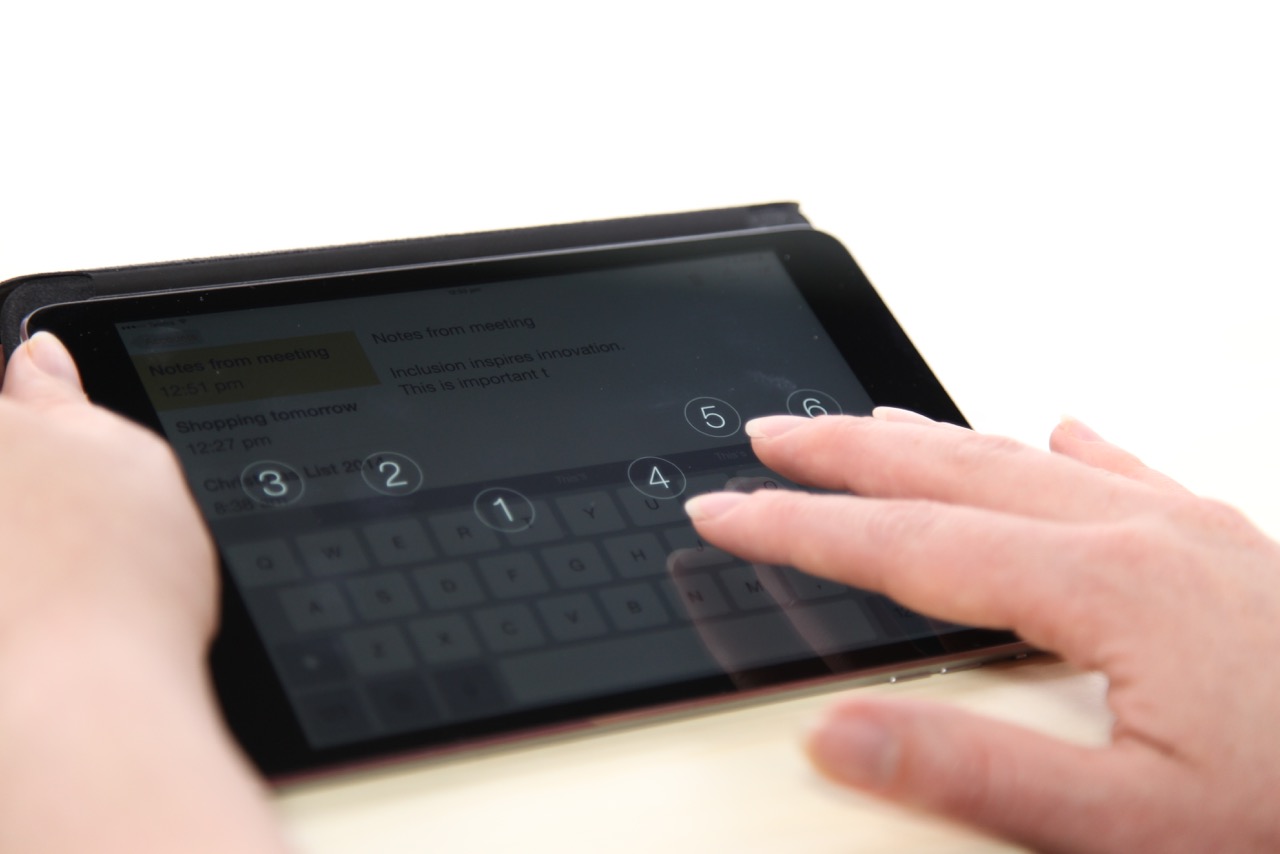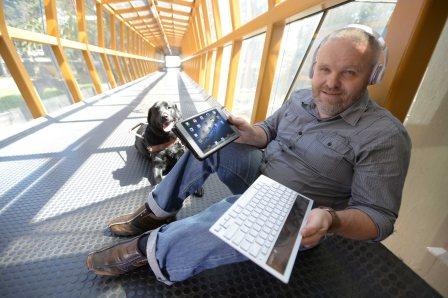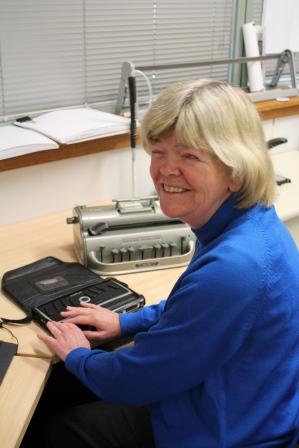 For almost two centuries, braille has been used by people who are blind or have low vision as an essential communications tool. Now, technology is catching up.
For almost two centuries, braille has been used by people who are blind or have low vision as an essential communications tool. Now, technology is catching up.
Today, braille users can create short text messages, status updates and tweets using a braille input on their smartphone and refreshable braille displays using a Bluetooth connection enable users to read information using dots.
But, why in an age of e-books and audio, is braille so important?
The Australian Bureau of Statistics 2006 Adult Literacy and Life Skills Survey showed that approximately 7 million Australian adults (46 per cent) had literacy scores below the minimum level needed to function fully in life and work. And, according to Vision Australia, for people who are blind, deafblind, or people whose vision is insufficient to allow them to use print effectively, braille is the only medium that can be used to convey the core elements of literacy such as spelling, punctuation, grammar and syntax.
Vision Australia has recently written an updated public policy about ‘Access to Braille’ and is calling on the Government to adopt policies and implement programs to maximise access to braille for Australians with print disabilities.
January 4 marked the 206 anniversary of the birth of inventor Louis Braille.
Stories from Vision Australia clients and staff:
David Woodbridge – Central Coast, NSW
 David Woodbridge, an Adaptive Technology Consultant at Vision Australia is impressed with the new inbuilt braille input function on his Apple devices.
David Woodbridge, an Adaptive Technology Consultant at Vision Australia is impressed with the new inbuilt braille input function on his Apple devices.
“The new software update means I can use the touch screen of my iPhone like a brailler. It works in all apps where there is a keyboard function. For me, it is a much quicker way to input information. I can add destinations to my GPS, post updates on Twitter and use it from the home screen to jump to my apps.”
Mitzi Raaphorst – Springwood, NSW
 Mitzi was born with congenital glaucoma, raised pressure in the eye. Her sight deteriorated so she decided to learn braille. She was later employed as a braille trainer at Vision Australia and now teaches people all across the country how to follow the dots.
Mitzi was born with congenital glaucoma, raised pressure in the eye. Her sight deteriorated so she decided to learn braille. She was later employed as a braille trainer at Vision Australia and now teaches people all across the country how to follow the dots.
“Learning braille is not dependent on how intelligent you are but on the sensitivity of your fingertips. Unfortunately this can decrease with age or some medical conditions like diabetes and stroke. It takes a lot of time and effort but tactile development is crucial,” says Mitzi.
“Every student says “I must be the slowest reader you’ve ever taught”. But with time they improve and grow in confidence,” she added.
Isabella Allen – Varsity Lakes, NSW
Isabella Allen, 23 from Varsity Lakes is learning to read braille to help her study more effectively at university and increase her independence at home. She works with a Braille Trainer from Vision Australia who conducts regular lessons over the telephone.
“I get the textbooks mailed to me and then my teacher rings me at a set time every week to go through each lesson. I learn lots of lovely new letters and signs. I want to start to borrowing braille books from the library because it will be a great way to keep it up,” she said.
Leslie Byrnes – Leeton, NSW
Learning to read braille has linked Leslie Byrnes, 66 from Leeton, with a worldwide network of pen friends and helped her get motivated when recovering from a stroke.
“My son and grandchildren used my braille to get me going again. They said ‘think of dad and how he got you the brailler, he’d want you to use it’.
After a fall in April last year, Vision Australia showed her some different machines for writing braille which she is now finding easier to manage.
“The new machine from Vision Australia is wonderful, it is much easier to type and it helps me to keep up with all my penfriends,” she said.
Kathryn Arch – Concord West, NSW
For Kathryn Arch, 58 from Concord West, reading braille has been the key to unlocking the magic of books throughout her life.
“Before I went to school I used to look at the lines on the page and it didn’t worry me that I couldn’t make out any letters because I thought school would give me a magic key to unlock the words. It never occurred to me that I would use my fingers to read,” she said.
Kathryn is an avid reader and is a long term member of Vision Australia Library. “I joined when I was ten and I’ve been a member ever since. Every time I ring, the librarians are shocked at how many books I have on my request list when they bring up my file. It’s always a bit of fun hearing their reaction,” she said. “Having access to books in braille makes a huge difference in my life,” she added.
Zachary Blunt – Elimbah, QLD
Zachary, 19, learnt braille in his first year of primary school. A talented musician who plays the guitar, keyboard and drums, he works as a music therapist, supporting clients who have a range of disabilities to improve their wellbeing and quality of life. But his love of music doesn’t stop there; he is also DJ, a music producer and one half of the performing duo – Camoflague.
Zachary feels that learning braille is very important for the blind and low vision community and it will always be part of their life.
“Sometimes you can’t rely on the new technologies – a battery may be flat or they stop working. So you may need to use braille again,” said Zach.
Barbara Gudgion, Trinity Beach, QLD
Barbara, 62 was born blind and grew up in New Zealand. She has always cherished words, reading, and learning. Her immediate and wider family are avid readers and encouraged her lifelong love of books.
Barbara was taught braille in her first year at boarding school by a teacher who was blind. “Learning from someone who was also blind was of enormous benefit and helped to cement important techniques such as reading braille with two hands,” says Barbara.
Barbara leads a support group for the blind and low vision community in Cairns, as well as the Vision Australia Telelink program. She uses braille to help her connect the people in these groups when dialling up participants and recording information.










